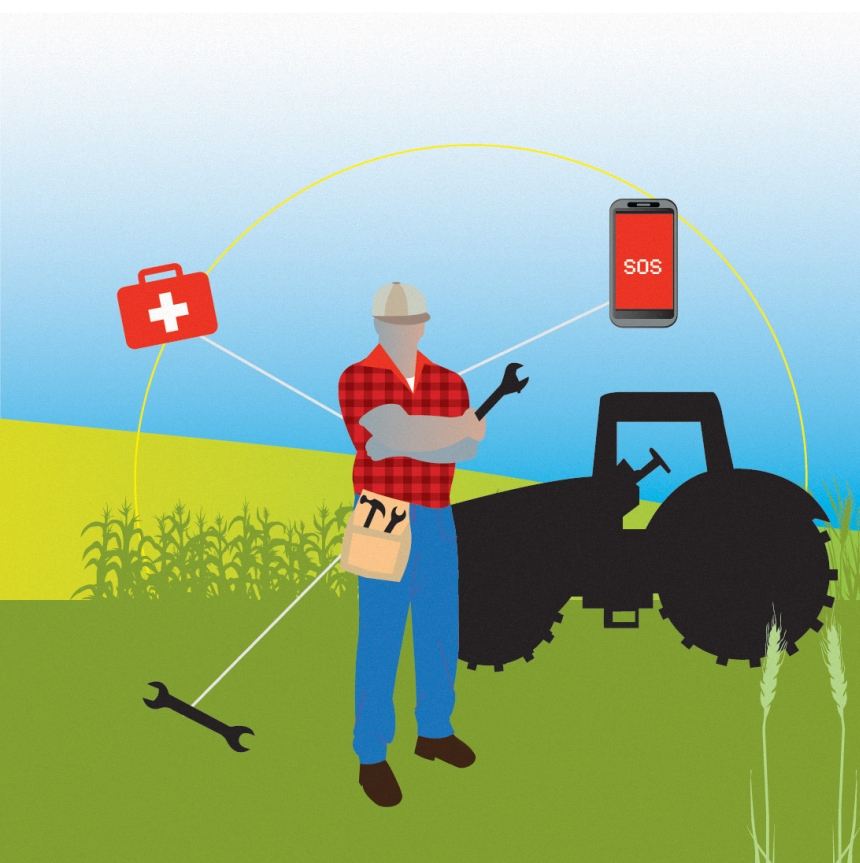Syngenta: ‘Take Charge’ Of Farm Safety
 Who says farming isn’t dangerous? Growers suffer an average of 70,000 disabling injuries a year, not including respiratory illness and hearing loss. More than almost any other job, agricultural work presents inherent dangers, and growers should have a take-charge approach to managing their physical and emotional well-being, according to Syngenta and university health experts.
Who says farming isn’t dangerous? Growers suffer an average of 70,000 disabling injuries a year, not including respiratory illness and hearing loss. More than almost any other job, agricultural work presents inherent dangers, and growers should have a take-charge approach to managing their physical and emotional well-being, according to Syngenta and university health experts.
Given the many challenges of their work environment, growers deserve credit for all they do to stay well and safe, said Judy Garrett, Syngenta Health Services manager. However, there’s always more that can be done; and taking the extra time to be safe is always a worthwhile investment, especially in relation to these common health-related challenges in agriculture:
Traumatic Injury
Injuries from tractors and other equipment are quite common. One in every 10 growers has an amputation, said Deborah Reed, distinguished service professor at the University of Kentucky College of Nursing. Fatigue and stress are contributing factors to those numbers. “Our brains are wired to do one thing at a time,” Reed said. Fatigue and stress distract us from the task at hand. And more than half of growers also have an off-farm job, making fatigue and stress even more likely.
To help avoid on-farm injuries, growers need to be sure all equipment is operating and serviced properly. It’s also important for growers to understand how their machinery works. “Form good safety habits around issues, such as working alone,” Garrett said. You should always have a first-aid kit and a cellphone handy. Make sure you can call for help.”
Respiratory Illness
Rates of farmer’s lung, a disease caused by breathing in moldy hay or crop dust, have fallen as farming has become more mechanized. But organic dust toxic syndrome remains an issue and causes farmers flu-like symptoms several hours after working in a grain bin.
“People who have had this are more likely to report future problems when exposed to dust of any kind,” said Susanna Von Essen, M.D., professor of internal medicine at the University of Nebraska Medical Center. “It changes the lungs somehow.”
When working around grain, growers need to always remember to wear an N95 respirator with two straps as a precaution.
Chemical Exposure
Anhydrous ammonia probably causes the most problems for farmers, Von Essen said. “It can blind you and can cause an asthma-like response when inhaled.”
When using farm chemicals, growers need to remember to wear appropriate equipment and know what to do if exposure occurs. Keep chemicals in their original containers, post poison control numbers and have directions to your farm handy, Reed said.
Reading the product label is also critical. “The most important thing for growers to do is read and understand chemical labels,” said Syngenta Health, Safety, Environmental & Safety Security Manager Scott Moore. “The label is law and provides a wealth of ways to protect against exposures.”
Hearing Loss
Half of growers over age 50 have hearing loss, which can accumulate after years of working around loud machinery – even if the work was over short periods of time. A good rule of thumb – if a grower needs to raise his voice to be heard over the machinery, then hearing protection should be used.
And one more practice that’s always essential to good health, Garrett adds: Getting regular physical exams. “This would go for any profession. You may look and feel great, but many serious health threats – including many cancers, high blood pressure and heart disease – have no warning signs.”






